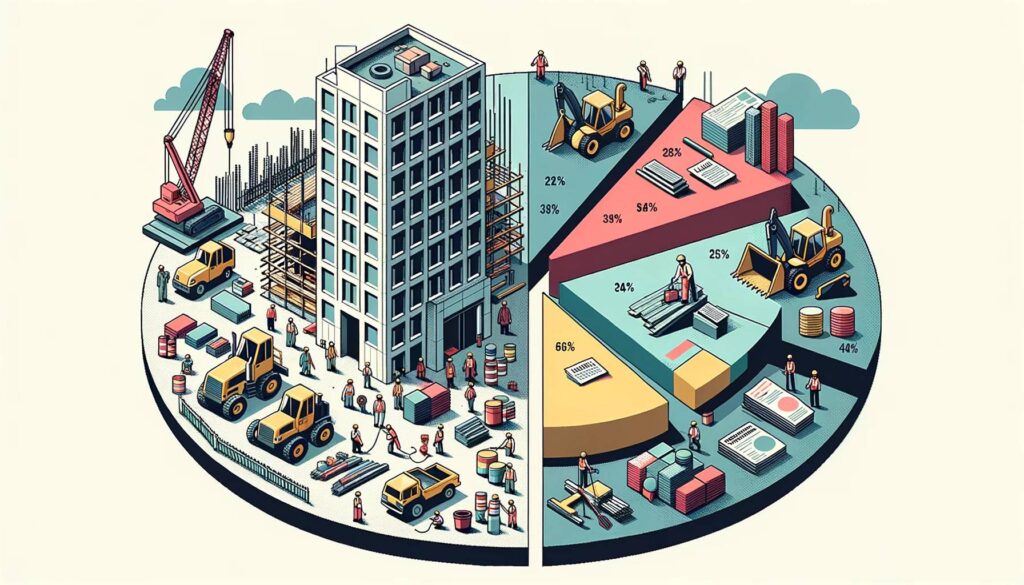Mastering Construction Budgeting: A Comprehensive Guide


Construction budgeting is a crucial component of any construction project. A construction budget is a cost estimate that outlines the anticipated costs and expenses associated with a project – however large or small.
A construction budget helps builders and owners stay on track financially, supports client relationships, and guide decision making from project inception through closeout.
In this blog, we explore the opportunities and challenges presented by construction budgeting and go into detail about how to develop a construction budget (plus pitfalls to avoid).
Table of Contents

Here’s a high-level overview of the basics of construction budgeting and why it’s important.
Construction budgeting is critical to the planning process of any project. Budgeting helps owners and builders understand the scope of the project and associated costs and avoid cost overruns.
Although the terms “construction budget” and “construction project budget” are used interchangeably, they are different:
A construction budget is important for several reasons. It can help control costs, highlight project risks, assist in decision making, facilitate communication with project stakeholders, and ensure profitability.
Without a well-planned budget, project owners and contractors may lack clarity regarding project timelines, risk overhead costs, and cost overruns, and struggle to plan for variables (such as unexpected delays, price increases, or change orders).

A construction budget is composed of two types of costs: direct and indirect. While these form the foundation of a budget, cost estimators must also set aside contingency funds for unexpected events.
Direct construction costs are budget items that are tied directly to a specific project. Examples include labor, materials, equipment, subcontractors, and more. Each has a direct impact on the profitability of a project.
Indirect costs include expenses that aren’t unique to a specific project. Examples include administrative expenses, insurance, utilities, rent, etc. Indirect costs have a greater impact on a construction company’s bottom line than direct costs.
Contingency funds are budget categories designated for variable or unexpected costs, such as overtime labor expenses or unexpected increases in construction material prices during the course of a project. Construction owners and contractors should allocate reserves specifically for these unforeseen expenditures.

Construction budgets can be categorized into two main types: annual budgets and project budgets.
Creating a construction budget is a massive undertaking. Even the most experienced cost estimators can struggle to account for the variables and unexpected costs that arise on a project. Follow these steps to create a construction budget:
To ensure ease and accuracy, use a historical construction budget template as your guide. See where certain costs went over budget and account for them in your rough draft.
In addition, gather and securely store all project documentation, including permits, contracts, deliverables, and so on.
Project management is critical to ensuring that any construction project – regardless of size – is executed successfully, on time, on budget, and to the highest quality standards.
A construction project manager is responsible for leading each phase of the construction process. They develop the project plan, assist with budget planning, coordinate resources, and collaborate with stakeholders and team members to achieve the desired outcomes.
Construction project managers also oversee budget follow-up. This position involves monitoring project budgets and project finances, making adjustments to accommodate risks, and ensuring the project stays on schedule.
Effective budget monitoring goes hand in hand with efficient project scheduling. Enhance your project management prowess by exploring our essential guide on Construction Scheduling Techniques for Effective Project Management, where you’ll find strategies to keep your projects on time and within budget.

The accuracy of your construction budget can make the difference between completing the project within the designated timeframe and budget or causing your company to lose money. Greater accuracy can be achieved using digital tools and software for construction budgeting.
With modern digital tools, you can centralize and access all the information you need to make critical decisions. Useful tools for construction budget management include:

Construction budgeting is important, yet it is not without its challenges. Budgeting mistakes are surprisingly prevalent, and unforeseen occurrences like scope expansion can lead to cost overruns if not adequately addressed during the planning phase.
Overcoming budgeting challenges is just one piece of the puzzle. Discover the comprehensive approach of cost engineering to ensure project success. Read our detailed guide on Cost Engineering: Beyond Budgets to Building Success and take your project management skills to the next level.
Consider the following case studies:
Architects are now looking into cost-saving measures, including removing the district gym from the project scope and using less costly building materials. The project will be put out to rebid before the deadline for the use of a $25 million bond issue before the project expires. Dr. Mark Stamm, superintendent, noted “The clock is ticking.”
There are always risks in construction budgeting, but pitfalls can be avoided by adhering to the following guidelines:
You don’t have to tackle this alone. Consider seeking guidance from an expert skilled in precise cost estimation to help you navigate budgeting challenges more effectively. Additionally, utilizing construction software can enhance budget accuracy, improve forecasting, facilitate project collaboration, and streamline issue resolution.
The two types of budgets are annual budgets and project budgets.
1- Annual budget: This encompasses anticipated earnings, cash flow, project costs, payroll, and other business expenses.
2- Project budget: A budget created for each specific job. It is an estimate of project costs, including labor, materials, equipment, and other project expenses.
The terms “construction budget” and “construction project budget” are often used interchangeably, but they are not the same.
• A construction budget is an estimate of the overall costs incurred during the physical construction of a building or infrastructure asset. This includes the cost of lumber, steel, concrete, HVAC, wiring, windows, etc.
• A construction project budget encompasses every cost essential for the realization of the project, including financing, permits, legal expenses, site planning, fixtures, furnishings, and more.
The four main elements of a construction budget are:
1. Direct or hard costs
2. Indirect or soft costs
3. Fixed costs
4. Variable costs

A construction budget should be at the center of any construction project – from the research phase through project closeout. Getting it right leads to positive outcomes for construction firms, owners, and the taxpaying public.
Acuity can help you achieve your cost goals for construction projects, make informed decisions, and minimize risks. Our comprehensive cost engineering services, advanced technology, cost engineers help project owners manage complex, dynamic, and budget-constrained construction projects.
Contact us to learn how our cost engineering services can help you optimize construction project budgets and reduce risks.
We provide innovative solutions for missions that matter around the globe. Our expertise includes occupational health services, humanitarian services, global health services, program & construction management, munitions response & demilitarization services, global security services, and base & critical facilities management. Our subject-matter experts are happy to share our perspective and insights with members of the press.